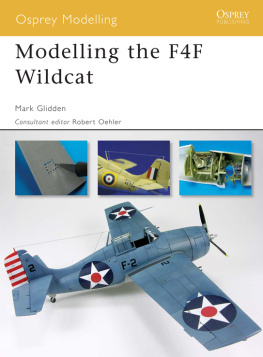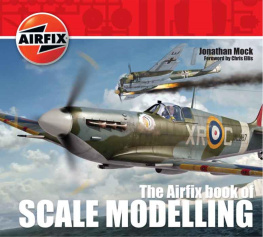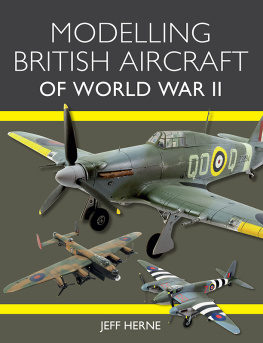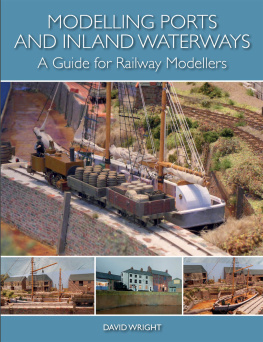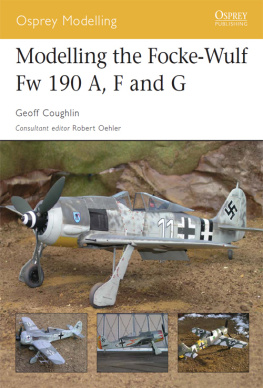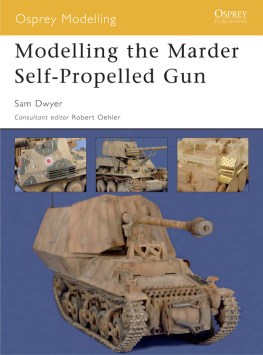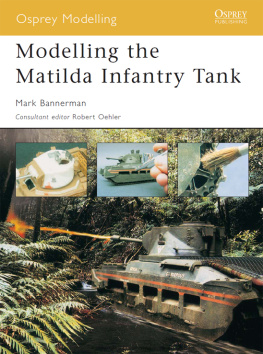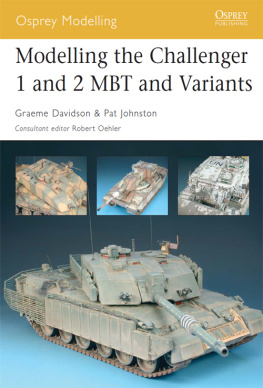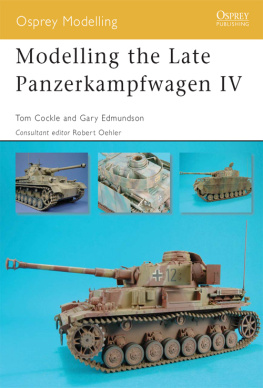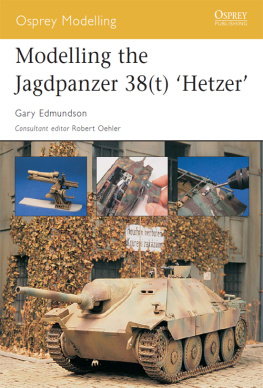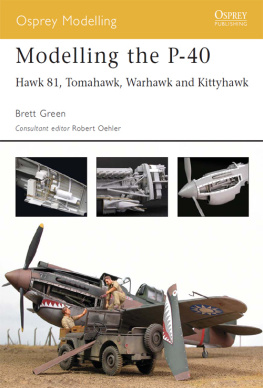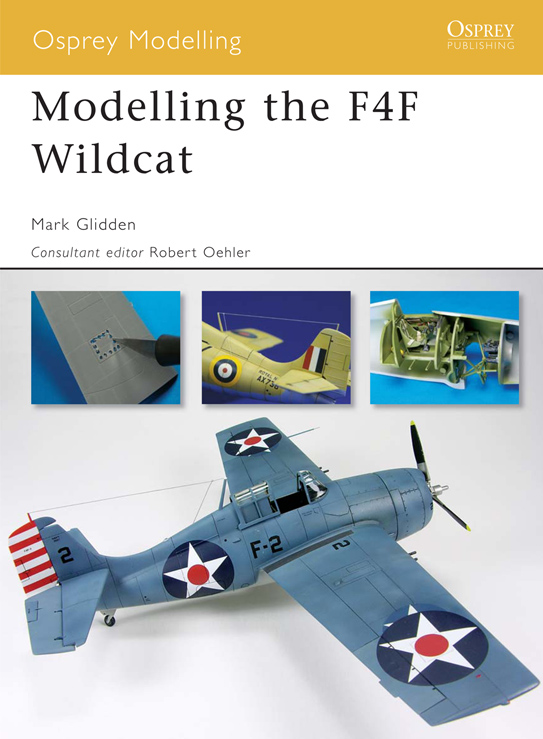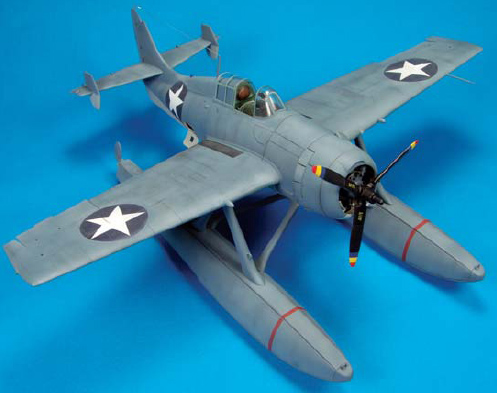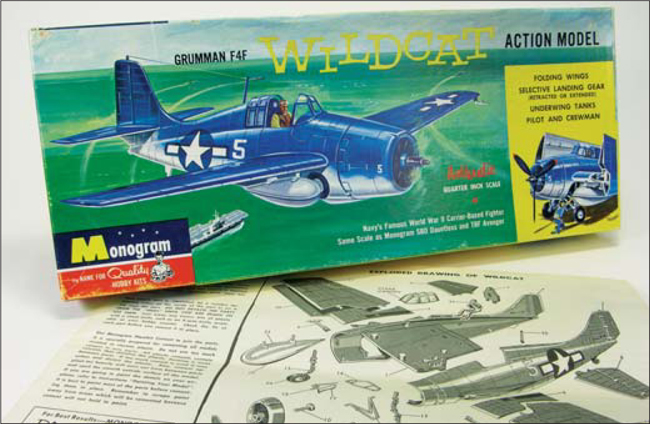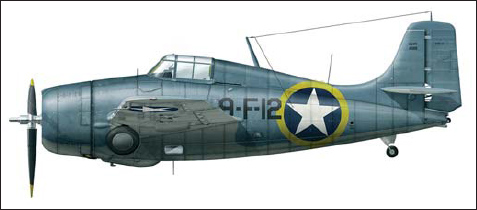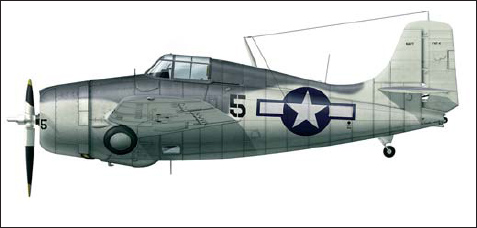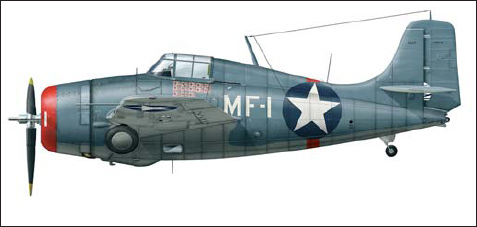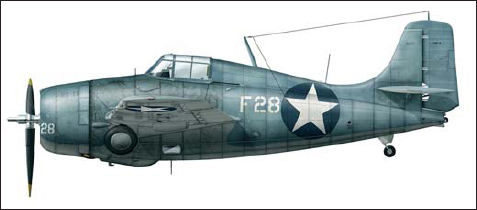Osprey Modelling 39
Modelling the F4F Wildcat
Mark Glidden
Consultant editor Robert Oehler Series editors Marcus Cowper and Nikolai Bogdanovic
Contents
Introduction
When I got back into modeling about six years ago after a 25-year hiatus, I discovered to my dismay that the hobby had changed a great deal in my absence and I had a great deal of catching up to do. I started reading everything about modeling I could get my hands on, whether it was magazines, books or the internet. So anxious was I to get back into the hobby I purchased the Tamiya Fw 190D-9, naively buying every piece of resin and photo-etch I could get my hands on for the kit. Never having used either medium before I was, to say the least, in a little over my head at the time. But what a learning experience it was. And it was fun.
Learning something new, getting some new ideas and improving ones modeling skills is what this book is all about. At the end of the day, if I have been successful in encouraging a modeler to try something new or help him achieve a new level in his modeling, then the making of this book will have been worthwhile.
While I learned more about the Grumman Wildcat than I ever wanted to during the preparation of this book, I am not by any means an expert on the subject. To those more enlightened than I, I apologize in advance for any inaccuracies.
A brief history of the Grumman Wildcat
The Wildcat is one of those historically significant aircraft that almost never came to be. In fact, it was through the misfortune of others that it became the Navys frontline fighter for the first year and a half of World War II.
The Wildcats development paralleled that of the Brewster Buffalo, and it was the Buffalo that the Navy chose over the Wildcat as its first operational monoplane fighter in 1938. However, hedging its bets, the Navy continued development of the Wildcat. When the Buffalo proved itself not up to the task in the hands of Allied pilots in the Pacific, the Navy turned to the Wildcat.
The F4F-3 was the first version of the Wildcat to enter service with the US Navy in December 1940. The -3 was noteworthy in having only four wing machine guns and non-folding wings. The -3 went through a series of engine and cowling modifications during its service.
The granddaddy of them all the Monogram Wildcat kit. Kind of makes you wish for the simple days, doesnt it?
Black 9-F-12: F4F-4 of VF-9 during Operation Torch, November 1942. (Thierry Dekker)
Black 5: F4F-4 of VF-29 in the dark gull gray and insignia white Atlantic paint scheme, November 1943. (Thierry Dekker)
White MF-1: F4F-3 (tail designation shows F4F-4) of VMF-224 flown by Major R. Galer at Guadalcanal, September 1942. (Thierry Dekker)
White F28: F4F-4 of VF-11 Sundowners at Guadalcanal, May 1943. (Thierry Dekker)
The F4F-3A used the Pratt & Whitney R1830-90 engine with the single-stage, two-speed supercharger. This version is distinguished by the lack of the two intercooler intakes inside the cowling. In its quest for fighter aircraft, Greece purchased 30 F4F-3As, which were shipped off in March 1941. However, before the shipment could arrive, the Germans overran Greece and the aircraft were turned over to the Royal Navy, who promptly christened them the Martlet III. These aircraft were assigned to No. 805 Squadron and were put into service in North Africa.
Next in the series was the F4F-4. The two major differences from the -3 series were the addition of two machine guns, for a total of six, and the installation of manually folding wings. The folding wings were a welcome change, lessening the aircrafts footprint so more could be stored on an aircraft carrier. The Wildcats pilots did not receive the additional armament so warmly. The two additional guns made the aircraft heavier than the -3, with a consequential reduction in performance. Firing time was also now reduced, as each gun had less ammunition than before. Pilots generally preferred the longer firing time of four guns over the increased firepower of six. It was the F4F-3 and -4 that held the line in the Pacific against faster and more agile Japanese opposition.
The Wildcatfish was a prototype floatplane converted from a late-production F4F-3 Wildcat. Naval military planners were concerned about a possible shortage of carriers and airbases in the Pacific from which to operate aircraft, so the idea of fitting the Wildcat with Edo floats was conceived. It is also said that the Navy was impressed with the Japanese Imperial Navys A6M2-N Rufe floatplane and hoped to emulate its performance. The prototype was first flown in February 1943, but its performance was disappointing. As it turned out, America was able to build aircraft carriers and airfields faster than anticipated and the Wildcatfish program became irrelevant.
When Grumman halted production of the F4F-4 to concentrate on their new Hellcat fighter, General Motors aircraft division, Eastern Aircraft, was given the task of continuing Wildcat production in April 1942. Their first production Wildcat was designated the FM-1, which was essentially a Grumman F4F-4 whose armament had now been reduced back to the original four machine guns. Later, Eastern altered the design to become the FM-2. This version had a more powerful, lighter-weight engine than previous versions, making it the hot rod of the Wildcat family. The FM-2 can be distinguished by its shorter cowling and distinctly taller tail.
| Designation | Characteristic | Notes |
| US Navy | Fleet Air Arm |
| XF-4F-1 | The first F4F was a biplane. | Design began in 1935, but never left the drawing board. |
| XF-4F-2 | Monoplane with P&W R-1830-66 engine. Two cowl-mounted .30-cal. machine guns. | Lost out to the Brewster XF-2A-1(Buffalo) in Navy trials in June 1938. |
| XF-4F-3 | P&W R-1830-76 engine with two-stage, two-speed supercharger. Various large spinners used in an attempt to improve engine cooling. | US Navy decided to continue with the aircrafts development. One built. |
| F4F-3 | Both P&W R-1830-76 and R-1830-86 engines used. Four .50-cal machine guns mounted in wings. Spinner deleted. Straight pitot tube and non-folding wings. Early production had two cowl flaps, late production had eight. Curtiss Electric cuffed prop. | The -86 engine is recognized by the two magnetos on top of the crankcase. First production contract awarded in August 1939. 285 built. |

